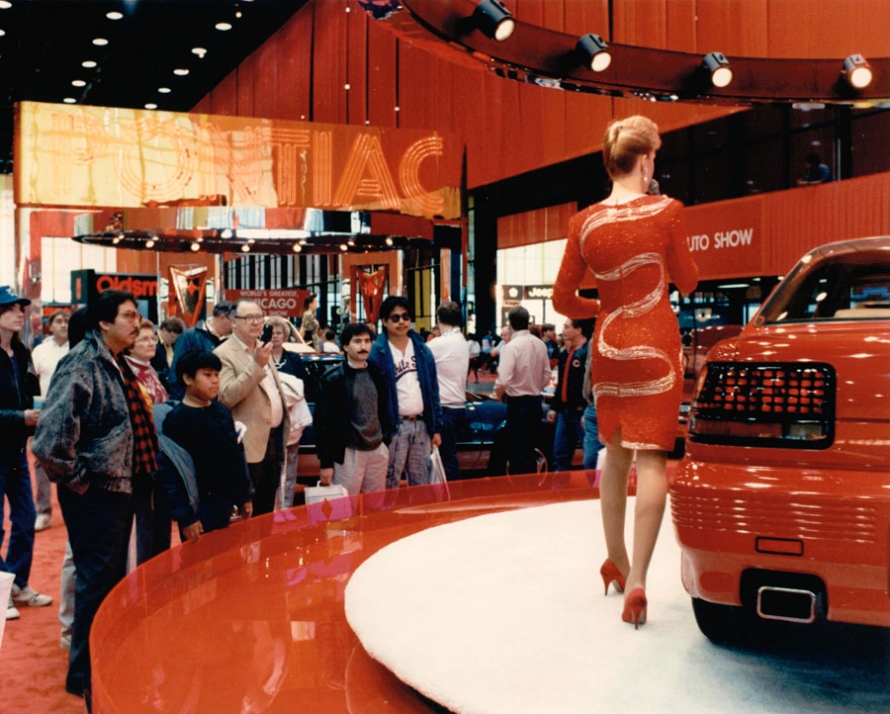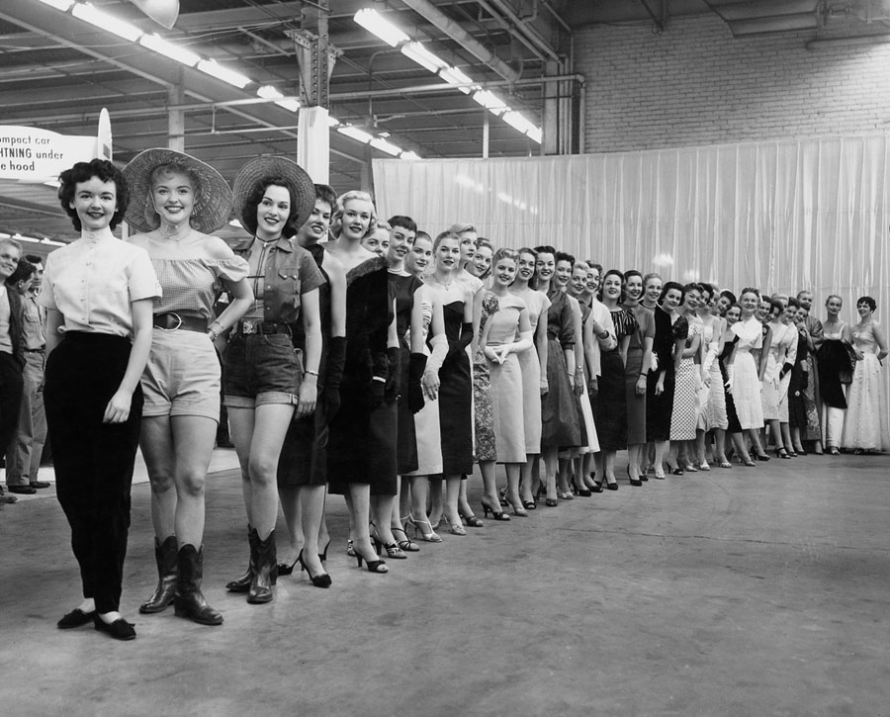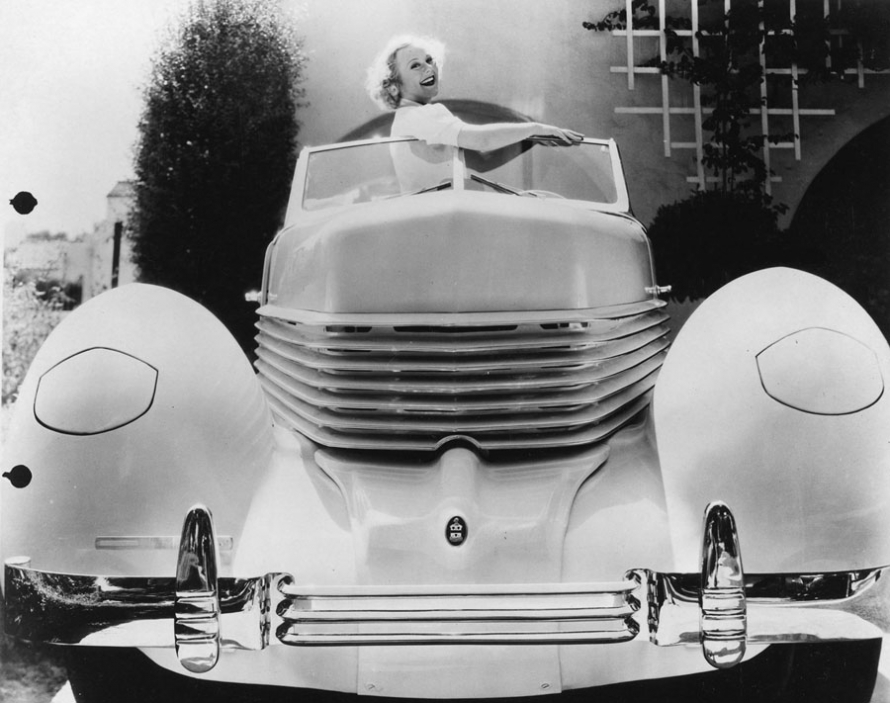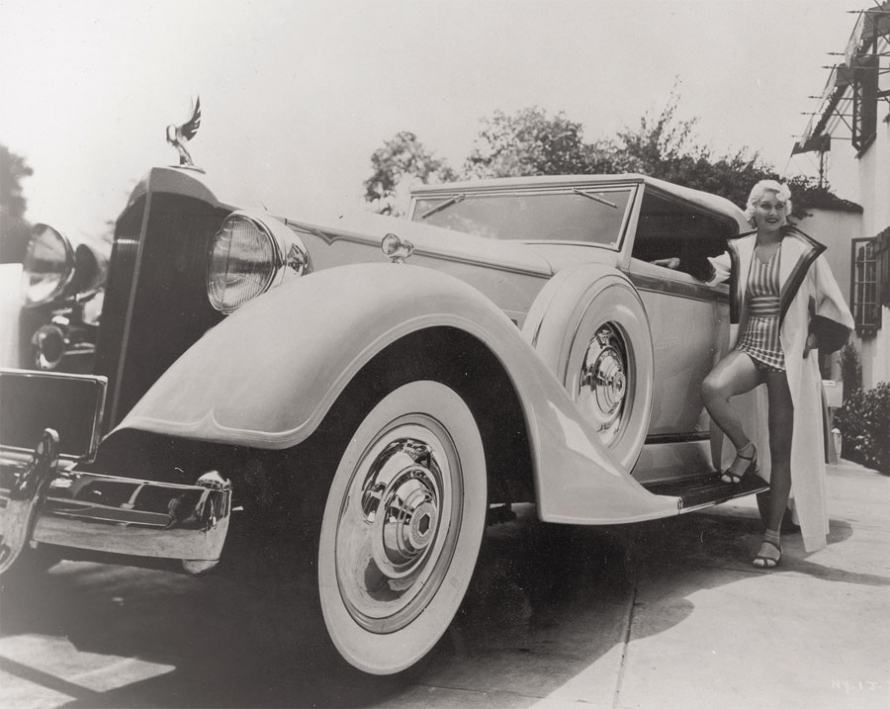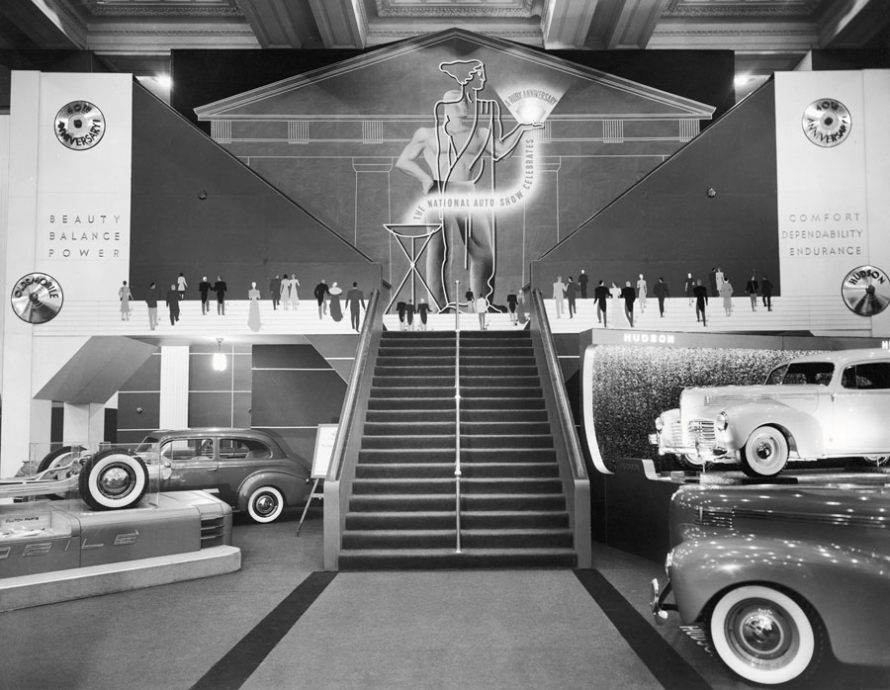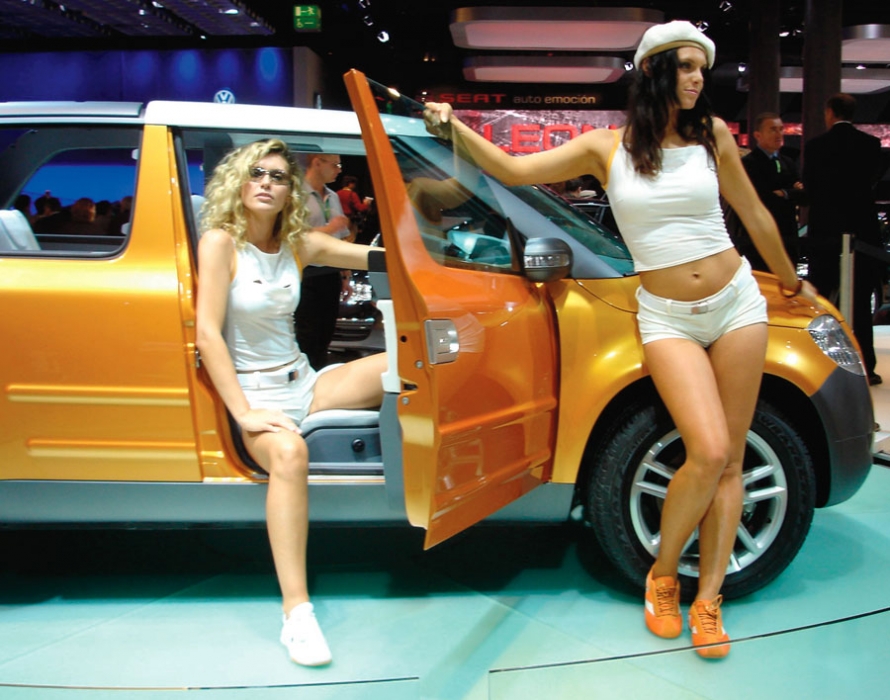Bikini models and trade shows may seem to go hand-in-hand, but in the auto-show world, models have evolved from sticker roles to spokespeople and can be just as informed about the vehicles as the auto-industry executives. Margery Krevsky’s new book, Sirens of Chrome, traces the story of auto models from short shorts to business attire, and is filled with terrific photography from the industry’s history.
Margery Krevsky co-founded the Productions Plus agency in 1981, one of the major players in training talent for auto shows. As her official bio notes, “At her insistence, models became trained as product information specialists so they could entice customers with facts, not just T&A.” All images courtesy the author and Momentum Books, all rights reserved.
How early in the auto world’s history were models used to sell cars?
The first auto shows—which both New York and Chicago debate about being first in 1905—both had “models.” These were families who were positive about this new mode of transportation. Physicians’ families especially were the first market targets because [doctors] needed reliable transportation in order to make house calls.
What’s the oddest story you’ve heard about a model used in a promotion?
Many press conferences employed sensational headlines. In the 1990s, John Middleton, then manager of the Pontiac Division at GM, rappelled from the top of Detroit’s Cobo Hall ceiling to a spot on the press conference stage. Mr. Middleton received an hour of training the night prior to do this feat. It made the front page of the Detroit Free Press.
For people who don’t attend auto shows and only see the newspaper photos, it doesn’t look like the models do much besides stand near the cars.
Then you need to go to a show and see how busy and active they are. They are the voice and the “pitch” person for each vehicle and each segment of the market. They are very busy! So go to show and see!
What is the car show experience like from the model’s point of view?
This is a part of the American culture that brings its own rewards of being in a place that people consider glamorous and part of their own life’s experience. Product Specialists are trained to talk about cars and all the aspects about them. These people live this information, and it is exciting. Exchanging car stories is fun and part of the experience. Yes, the hours are long, but America loves cars and that excitement is felt with most people who work on the auto show floor.
What do you drive? What would you drive if you could have any car?
I have driven many different cars over the years. Currently, I drive a Lexus RX 350 because I live in Michigan and need a car that can handle the snow and changing weather, and has four-wheel drive. I like the race-car drive of a Porsche and the glamour of a Corvette. My first car was a VW beetle and I never can forget that car. In fact, the cover of my book is the color of that car.
Who would you cast in a spokesperson’s role to help Detroit make its case to the government?
Susan Sarandon, because in the movies I would like to see a woman running a major automotive company, and also Tom Hanks, because he has a gift for choosing great roles.
